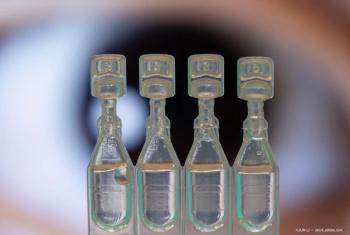
NTG patient evaluation based on ruling out nonglaucomatous etiologies
San Francisco - The diagnosis of normal-tension glaucoma (NTG) should be approached as one of exclusion with careful evaluation of the patient for other etiologies that may underlie observed structure and function changes, said Andrew G. Iwach, MD, associate clinical professor of ophthalmology, University of California, San Francisco.
San Francisco - The diagnosis of normal-tension glaucoma (NTG) should be approached as one of exclusion with careful evaluation of the patient for other etiologies that may underlie observed structure and function changes, said Andrew G. Iwach, MD, associate clinical professor of ophthalmology, University of California, San Francisco.
A thorough history should be taken in order to uncover any of a number of disorders that can cause a visual field defect in the absence of elevated IOP or that can explain low IOP. For example, patients should be queried about the date of their last physical exam as the field defect may be a result of some systemic factor. Use of alcohol, cannabis, systemic and topical prescriptions, and over-the-counter medications should also be investigated because of their potential to affect IOP.
Recognizing that IOP can vary by 2 to 6 mm Hg due to normal diurnal fluctuation, it may also be worthwhile measuring diurnal IOP. If that study is undertaken, however, patients should be instructed to keep to their usual daily routines.
Clinicians should also not overlook the possibility that their Goldmann tonometer needs to be recalibrated, and Dr. Iwach recommended that the calibration be checked annually.
Newsletter
Don’t miss out—get Ophthalmology Times updates on the latest clinical advancements and expert interviews, straight to your inbox.














































.png)


